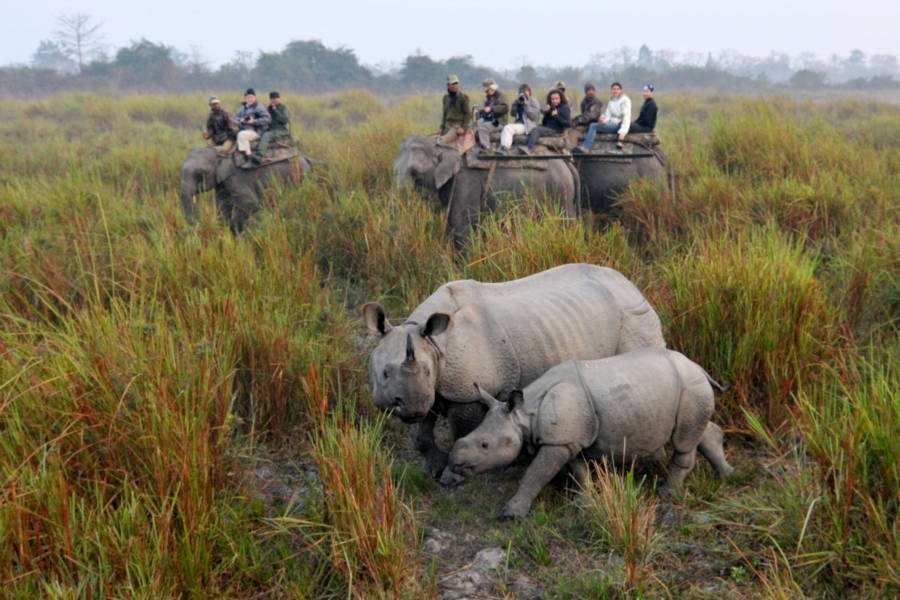Kaziranga: The park that shoots people to protect rhinos

Kaziranga: The park that shoots people to protect rhinos
With rhino horns on the illegal black market growing in cost, the rhino numbers are dropping across Africa and Southeast Asia.

Rhinos in North-eastern India is, however, thriving in Kaziranga.
A new BBC feature investigation found that this is an aggressive policy that can be as effective as it is bloody, thanks to the park’s controversial standing orders to kill poachers caught in the park.
Park Rangers shot more than 20 poachers in 2015, killing more poachers than poachers killed in the year.
National Park officials are allowing park rangers to “shoot-on-sight” if they come across any of them.
According to Quartz, the forest department in India has always been a militarized service, with park rangers wearing uniform-style khakis, carrying guns and gadgets such as drones, and having the authority to prosecute any offenders.
The government defends this policy by pointing out that local crime syndicates are frequently involved in the illegal wildlife trade and escalate the situation in ways that could cost lives.
Still, the BBC accuses the park rangers of carrying out extrajudicial killings: when governmental authorities kill people without any judicial process or legal proceeding involved.
Without such due process in place, things can quickly spiral out of control. The BBC thus cites critics who say that the need to protect endangered species is conflicting with the rights of the people who eke out a survival around the national parks.
Groups such as Survival International, which was featured by the BBC, say that good-intentioned conservation projects often deny and undermine indigenous rights across the globe.
There is a historical context for this as well. Many of India’s national parks have a colonial legacy, with government authorities preserving the forests for the elites who ran the former British colony.
These land-use distinctions did not consider the rights of the people who were already living there.
A 2006 piece of legislation known colloquially as the Forest Rights Act sought to rectify this by restoring individual and community rights to land use based on historical evidence.
However, some say that Kaziranga’s shoot-on-sight orders have violated this edict.
Subscribe to our newsletter!